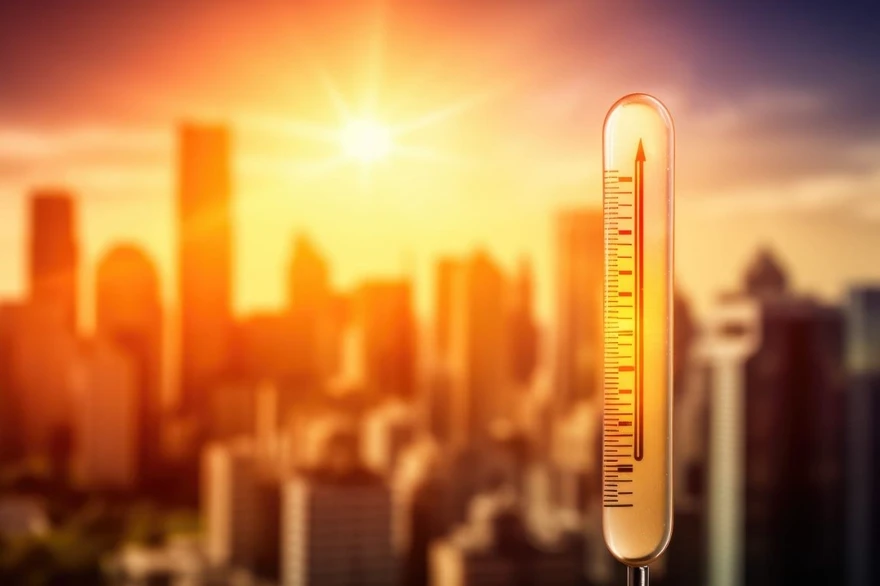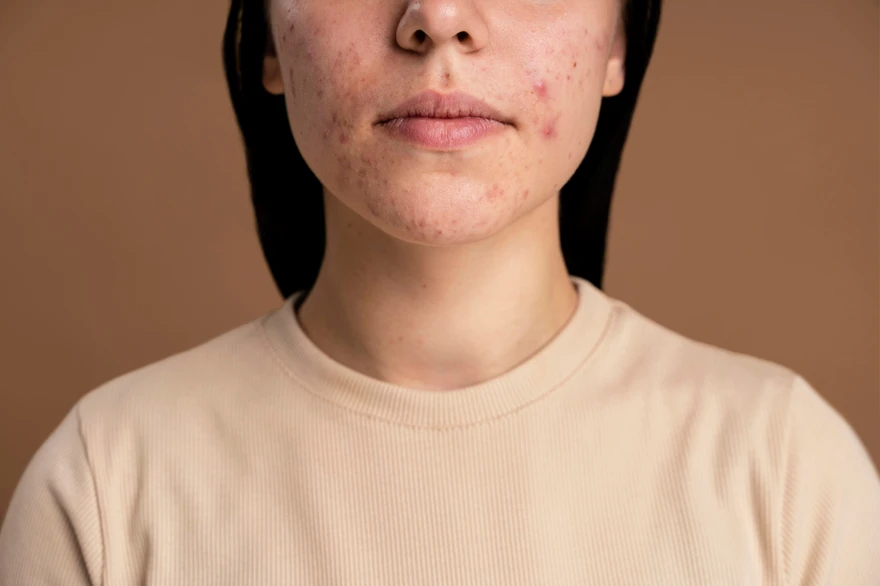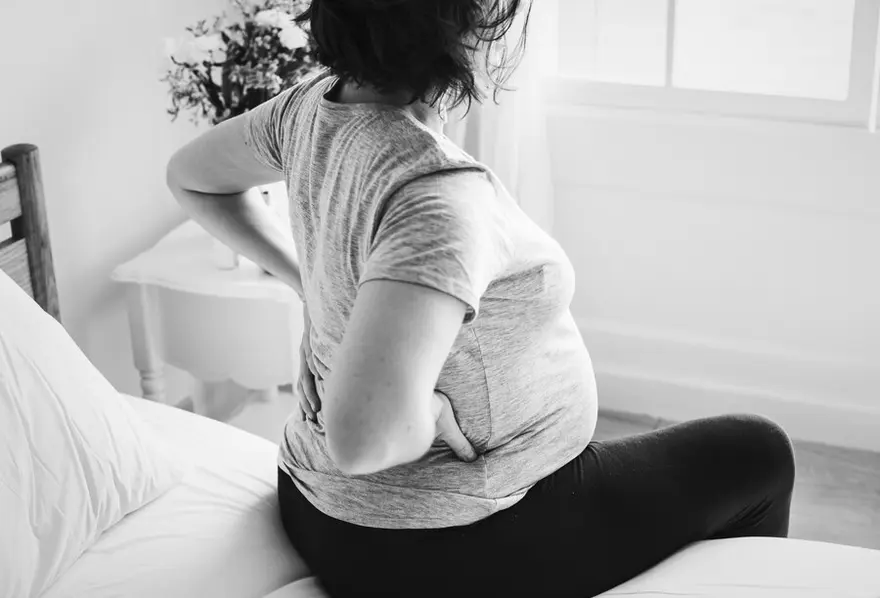Preventive Healthcare
October Heat: How It Affects Your Health and How to Protect It
432 Views
0

Know About 'October Heat'
Here comes October, but where is the winter chill you've been waiting for? Instead, you're greeted with the 'October heat', a peculiar weather phenomenon specific to tropical and subtropical regions.
For many in India, it's more than just a rise in temperature; it’s a serious health concern that increases the risks of dehydration, heat exhaustion, and sunstroke. But what exactly is this 'October heat', and how does it affect your health? More importantly, how can you protect your well-being during this intense transition from monsoon to winter? Let’s dive in and explore the answers.
What is October Heat?
October heat refers to a weather phenomenon occurring in tropical and subtropical regions, especially in North India, Maharashtra, and Gujarat. It is characterised by high temperatures and lingering moisture from the monsoon season, creating an oppressive and uncomfortable climate.
Unlike the dry summer heat, October heat combines humidity with warmth, making it feel even hotter. The lack of significant winds during this period traps the heat and humidity in the atmosphere, intensifying discomfort. This combination of warmth and moisture can lead to health risks like dehydration and heat exhaustion, affecting both outdoor activities and general well-being. It is essential to stay hydrated and take necessary precautions to mitigate these health risks during this challenging time.
What is the difference between October Heat and Summer Heat?
The key difference between October heat and summer heat is in their humidity levels. While summer brings along dry, hot winds, October features high humidity levels due to residual moisture from the monsoon season. This lingering moisture makes October's heat feel more suffocating than its summer counterpart.
Urban areas face additional challenges due to the urban heat island effect, where concrete structures absorb and retain heat, intensifying temperatures further. Hence, cities usually experience warmer temperatures compared to their rural counterparts during this period.
What are the risks associated with October Heat?
October heat causes significant health risks due to the strain it places on the body's natural cooling mechanisms. The combination of high temperatures and lingering humidity can lead to various health issues, including heat exhaustion, dehydration, and respiratory problems.
- When humidity levels are elevated, the body's ability to sweat and cool down effectively is compromised, making it increasingly difficult to regulate the body temperature. This can cause overheating, fatigue, and other serious heat-related conditions.
- Moreover, high humidity can exacerbate existing health conditions such as asthma and other respiratory illnesses, making it difficult for the individuals to breathe comfortably. The thick, humid air can trigger the asthma attacks and worsen the symptoms for those with chronic respiratory issues, creating a dangerous situation for those affected.
- Vulnerable groups, including the elderly, children, pregnant women, outdoor workers, and individuals with pre-existing medical conditions, are especially at risk during October heat.
- The elderly may have a diminished capacity to sense heat, leading to higher likelihood of heat-related illnesses. Young children, with their developing systems, and pregnant women, who face additional physiological changes, are also more susceptible to the adverse effects of heat.
- Outdoor workers, especially, are at an increased risk due to prolonged exposure to harsh conditions, raising the potential for heat stress, dehydration, and fatigue.
- Prolonged exposure to the oppressive October heat can lead to severe health emergencies, including heat stroke and cardiac events, which require immediate medical attention.
It is essential for individuals in affected regions to stay hydrated, take regular breaks in shaded or air-conditioned areas, wear lightweight clothing, and monitor their health closely to prevent complications from this challenging weather phenomenon.
What are the diagnostic tests done during the October Heat?
During periods of October heat, healthcare providers may recommend several diagnostic tests depending on the symptoms presented.
These might include:
- Blood Tests: Helps determine if a person is dehydrated or if any underlying health issues could be exacerbated by high temperatures.
- Pulmonary Function Tests: Justified in cases where individuals report increased difficulty breathing; these tests assess lung function and capacity.
- Skin Tests: To check for skin infections that may arise from excessive sweating during the October heat.
Best Tips For Maintaining Health During October Heat
Stay Hydrated
Maintaining hydration is crucial during October heat. Drink plenty of water throughout the day, even if you don’t feel thirsty. Dehydration can cause serious health complications, so consider carrying a water bottle wherever you go.
Lightweight, Loose Clothing
Wearing lightweight, loose-fitting clothing helps your body cool down. Opt for breathable fabrics like cotton which allow better air circulation and moisture evaporation, minimising discomfort from the heat.
Avoid Peak Heat Hours
Try to stay indoors during peak heat hours, typically from 10 a.m. to 4 p.m. If you need to be outside, seek shade whenever possible and take frequent breaks to cool down.
Cool Your Environment
Keep your living space cool by using fans, air conditioning, or even just keeping windows open at night for ventilation. Use damp cloths or take cool showers to lower your body temperature.
Sunscreen is Non-Negotiable
Apply a broad-spectrum sunscreen with an SPF of 30 or higher to protect your skin from harmful UV rays. Reapply every two hours, especially if you’re sweating or swimming.
Plan Outdoor Activities Wisely
If you plan to engage in outdoor activities, schedule them for the early morning or late evening when temperatures are cooler. This minimises the risk of heat-related illnesses.
Monitor Your Diet
Eat light and nutritious meals. Focus on fruits and vegetables that are high in water content, such as watermelon, cucumbers, and oranges, which help keep you hydrated.
Check on Vulnerable Individuals
Make an effort to check on vulnerable groups, such as the elderly, children, and those with health issues. Ensure they are staying cool and hydrated.
Cooling Foods
Incorporate cooling foods into your diet, like yoghurt, coconut water, and mint. These foods can help regulate your body temperature and provide hydration.
Recognise the Warning Signs
Be aware of the warning signs of heat-related illnesses, as October heat causes dizziness, nausea, excessive sweating, and fatigue. If you or someone else experiences any of these symptoms, take immediate action to cool down and hydrate. Seeking medical attention may be necessary in severe cases.
Frequently Asked Questions
Why is October Month Hot?
October experiences high temperatures because of residual moisture from the monsoon, combined with an intense sunlight and decreased rainfall. This creates a hot, humid, and oppressive atmosphere in many regions.
What is the Effect of October Heat?
October heat can lead to dehydration, heat exhaustion, and exacerbate the respiratory issues. It strains the body's cooling mechanisms, increasing discomfort and health risks, particularly for vulnerable individuals like the elderly and children.
What is the Main Reason of October Heat in India?
The primary reason for the October heat in India is the lingering humidity from the monsoon season, combined with rising temperatures and minimal rainfall, which creates an oppressive climate
How Can We Protect Ourselves from October Heat?
To protect against October heat, stay hydrated, wear lightweight clothing, avoid peak heat hours, use sunscreen, and eat cooling foods. Additionally, keep an eye on vulnerable individuals for signs of distress.
How Long Does October Heat Last?
October heat typically lasts from early October to mid-November in India, gradually transitioning into a cooler weather as the winter season approaches, though the duration may vary from region to region.
Which Regions are Most Affected by October Heat?
Regions most affected by October heat include Punjab, Haryana, Uttar Pradesh, Madhya Pradesh, Maharashtra, and Gujarat, where high humidity and temperatures causes discomfort, impacting daily activities and health for residents.
Is October Heat Becoming More Common Due to Climate Change?
Yes, October heat is becoming more common due to climate change, which intensifies weather patterns, resulting in higher temperatures and prolonged heat events that pose risks to public health and well-being.
Conclusion
October heat is indeed a challenge, but with the right knowledge and strategies, you can effectively protect your health. Regular check-ups and diagnostic tests can also be useful in detecting any underlying conditions that might be exacerbated due to October heat.
Metropolis Healthcare offers reliable diagnostic services, including at-home sample collection for blood tests. They’re committed to delivering accurate results promptly, enabling you to make timely healthcare decisions. Remember, prioritising your health is always a wise choice for overall well-being.
 Home Visit
Home Visit Upload
Upload













1701259759.webp)









 WhatsApp
WhatsApp